 I’ve been practicing yoga for about 10 years now. For the first 8 years, you can say that I was pretty much obsessed with the power Vinyasa style. More recently however, I’ve begun to dabble in various different styles of yoga including, but not limited to Iyengar, Sivananda Hatha Yoga, Jivamukti, Vini Yoga, Yin Yoga and Anusara. Some may say that being involved in the different styles and different philosophies waters down my commitment to each, but I disagree. Students come to my classes from different backgrounds and practices. I want to understand where they come from and what they practice. I love incorporating aspects of the different philosophies into my teachings because I believe there’s truth in all of them. That’s why, when Yuri approached me last week to ask whether he could teach a Kundalini Yoga class, I jumped at the opportunity to again expand my knowledge and understanding of yet another yoga perspective. Of all the yoga styles and philosophies that I’ve encountered, Kundalini Yoga has always peaked my curiosity. It’s quite different from the Hatha and Ashtanga yoga lineage. I’ve also heard the claim that one Kundalini class is something like ten times more effective than other forms of yoga in stimulating change in a person’s life. So yesterday morning, I went to find out for myself. Before I get into the specifics of the practice, I’d like to clear up one minor detail – one that tends to confuse people. As the goal of all yoga practices is the union of the Shiva and Shakti aspects, representing consciousness and creation, which is triggered by the awakening of Kundalini energy, a dormant potential force that lies at the base of the spine, all yoga is essentially Kundalini yoga. However, in this case, I’m referring to the “Kundalini Yoga as taught by Yogi Bhajan,” who brought the practice to the west in the late 1960s. Now, to the practice. We began with a short meditation while repeating the mantra “Ong Namo Guru Dev Namo” to open the heart and empower us through our practice. Then began a series of short repetitive movements accompanied by the “breath of fire,” which is a little bit like controlled hyperventilation. I found the movements to be similar to some of the Vini Yoga movements that I’ve practiced before, but much faster. A simple example of one of these movements is taking your fingers to the shoulders with the elbows lifted to shoulder height. Inhale as you turn the entire torso, head and neck to the left. Exhale as you turn to the right. Now repeat this fast while using the breath of fire for about a minute and a half. Try it. It’s a lot harder than it seems, but somewhere between the burning shoulders, the focus on the area of the third eye and the breath of fire, I felt energy being released inside my body. Okay, maybe it was the light-headedness that resulted from the hyperventilation, but through the movements and breathing and focus, I experienced a complete release of all the tension that I’d been holding on to all week. I shrugged it out through my shoulders, chopped down my obstacles with an invisible sword, released my fears through my breath and let all the worries escape by focusing on the light between my eyes. When it was all done, I laid down in Savasana and let the emptiness sweep over me. I won’t vouch that everyone who attended class yesterday morning felt like this, although I’ll bet there are at least a couple of sore shoulders out there. Do I think I’ll be enlightened ten times faster? I’m not sure, but I do know that this certainly will not be my last Kundalini Yoga class. I’d like to thank Yuri for teaching such a great class! Blog post by Julie (juliehana.com)
0 Comments
In December 2012 Al Jazeera producer and Huffington Post journalist, Bhanu Bhatnagar, completed his yoga teacher training and taught his first yoga class at the practice space in Ban Aphai. In line with the yoga community’s commitment to Karma Yoga, or service, the class was held as a fundraiser for the Traditional Arts and Ethnology Center (TAEC). Proceeds of the class that was held on December 10 went towards supporting TAEC’s mission of preserving cultural diversity in Laos.
Bhanu recently wrote about his first teaching experience in the Huffington Post. The article is a reflection on an experience that most yoga teachers can appreciate. For students, this is a great insight into some of the challenges that your teachers face as they strive to deliver guidance, knowledge and compassion in their classes. Read the Huffington Post article. The following photographs were taken by Casey Conroy. On Tuesday November 27, guest teacher Joanna, who was traveling through Luang Prabang while on honeymoon, taught a morning class at Utopia. Here are the pictures from the class.
Ashtanga Yoga Invocation
om vande gurunam charanaravinde sandarsita svatmasukhava bodhe nihsreyase jangalikayamane samsara halahala mohasantyai abahu purusakaram sankhacakrasi dharinam sahasra sirasam svetam pranamami patanjalim om Translation (1st verse) I bow to the lotus feet of the guru who awakens insight into the happiness of pure Being, who is the final refuge, the jungle physician, who eliminates the delusion caused by the poisonous herb of samsara [conditioned existence]. Translation (2nd Verse) Even though Sage Patanjali was human and not a mythical deity, in this chant he is depicted in the divine form of Vishnu. He has 4 arms, which are holding 3 objects: conch, discus and a sword. The conch (sankha, pronounced as “shankha”) represents the divine sound, which is capable of awakening us from the state of ignorance. Because Patanjali did a great job unifying the ancient yogic knowledge in his Sutras and the text has awakened many people, he is holding it in his hand. The discus (chakra) is the symbol of infinity and life that Vishnu sustains. As well, Vishnu uses his discus to fight negative spirits, which means that the discus is the weapon to fight the negative emotions that distract us from being enlightened. The sword (asi) represents the discriminative wisdom, for the sword can cut through illusion and dualism. Since mind is represented by snakes in the Hindu tradition, the thousand headed snake above Patanjalis’ head represents his mastering over the possessive mind. This means that reading and following the Sutras one can achieve the “citta vritti nirodhah”, cease the fluctuations of the mind and therefore reach the state of Yoga, the state of Union. You can call union with God, with your own Self, with the Universe. After having read the Yoga Sutras, when I chant these lines in an aware state, a feeling of appreciation and gratefulness arise inside me. I find the text very easy to understand, yet, each time I re-read it, there is always something else emerging to be learnt. The above translation and comment of the Ashtanga Yoga Invocation were provided by Craig. To learn more about Ashtanga Yoga, join Craig at the Ban Aphai studio. It has become a bit of a ritual amongst Luang Prabang’s expat yoga enthusiasts to wind down the week with a Friday night class at Ock Pop Tok. And who better to lead us into the weekend than our own local teacher Khoun, who knows just how to give her class a boost of energy, a butt-kicking and a mental makeover that’ll make you come back for more. Friday evening classes generally start in a standing posture to keep the energy level high, and you can bet that Khoun usually has something up her sleeve to deepen your practice, whether it’s a warrior three alignment exercise against the wall or a sequence that leads into an oh-so-challenging forward split. Don’t worry beginners, this class is fun and we don’t take ourselves too seriously. We can guarantee that you’ll walk out with a smile. Following yoga, Friday night is also pizza night at the “secret” pizza place just outside the center of town. We’re talking authentic Italian food that simply melts in your mouth. After an amazing yoga class, it’s a guilt-free foodie experience. So next time you’re thinking about what to do on a Friday night in Luang Prabang, consider yoga and pizza. It might just be a ritual you’ll adopt. Here are some pictures of last Friday’s class. Blog post by Julie (juliehana.com)
 Luang Prabang has been buzzing with activity over the past week. Despite the rainy season, travelers have descended upon our little town and there’s an energy of excitement in the air. Out on the main street, tuk tuk drivers call hopefully to passers by and restaurants look a little less deserted than they did the week before. On Monday, we launched a new class at Utopia, a 60-minute Vinyasa flow starting at 6pm. Joining the class were a couple of ladies from England and a tour group from G Adventures. It was a cloudy evening, and as expected, the sunset wasn’t spectacular, but the enthusiasm from happy travelers around us created a positive wave of energy that we were able to ride on for the length of the class. Monday’s sessions end after the sun disappears behind the horizon so that yogis awaken from Savasana, final resting posture, to a darkened sky. By this time, the old bridge in the distance is dimly lit and Utopia’s decks are brightened by rope lighting and the flicker of candles. It’s truly uplifting. Come and check it out for yourself! Blog post by Julie (juliehana.com)  Early on a Friday morning last week, the clouds hung in the air, thick with the hint of a lingering shower. It’s July in Luang Prabang, and by normal standards, the rainy season should be in full swing. Much to the surprise of locals and travelers alike, it has been unseasonably dry. On this particular Friday however, it looked like the skies might finally open up. On Utopia’s outdoor deck, the air was thick, but the clouds provided shelter from the sun, which rises from across the Nam Khan River, often shining its rays on early morning yogis. Despite the threatening clouds, three people showed up, ready to start off their day right. As we flowed through our Vinyasa sequences, so did tiny little raindrops, which we accepted as Mother Nature’s nectar, cooling and soothing. Whenever the sun could, it poked its rays through gaps in the clouds, nourishing and energizing. The wind swept over our bodies, carrying with it our sweat, cleansing and detoxifying. When nature joins in to complete a yoga practice, you know that you and it are one.  Photographs in this blog post were taken by FancyTravel. Check out a video of our class, put together by FancyTravel at http://www.youtube.com/watch?v=IIb-jtAdzoU&feature=share Blog post by Julie (juliehana.com) |
Archives
September 2023
Categories
All
|
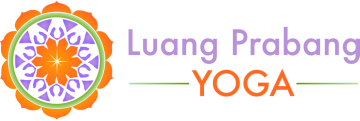

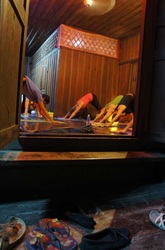


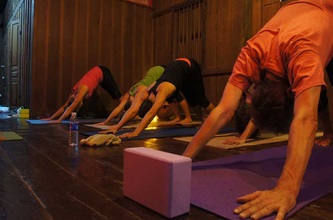



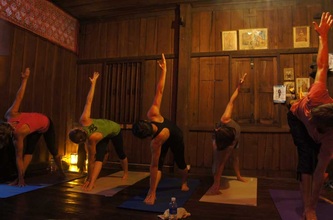





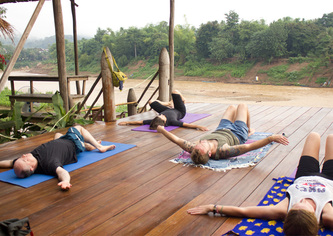

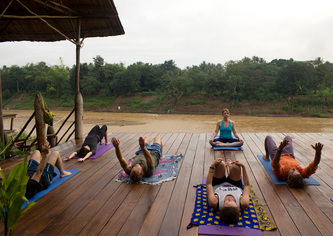
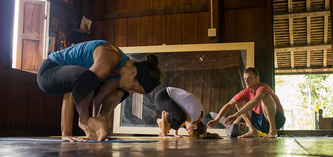


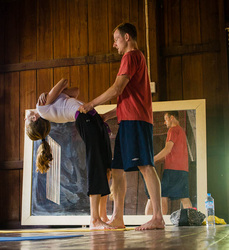


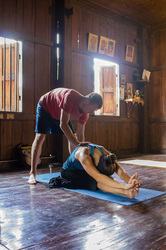







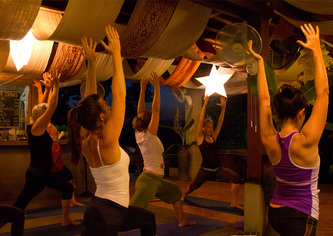
 RSS Feed
RSS Feed
